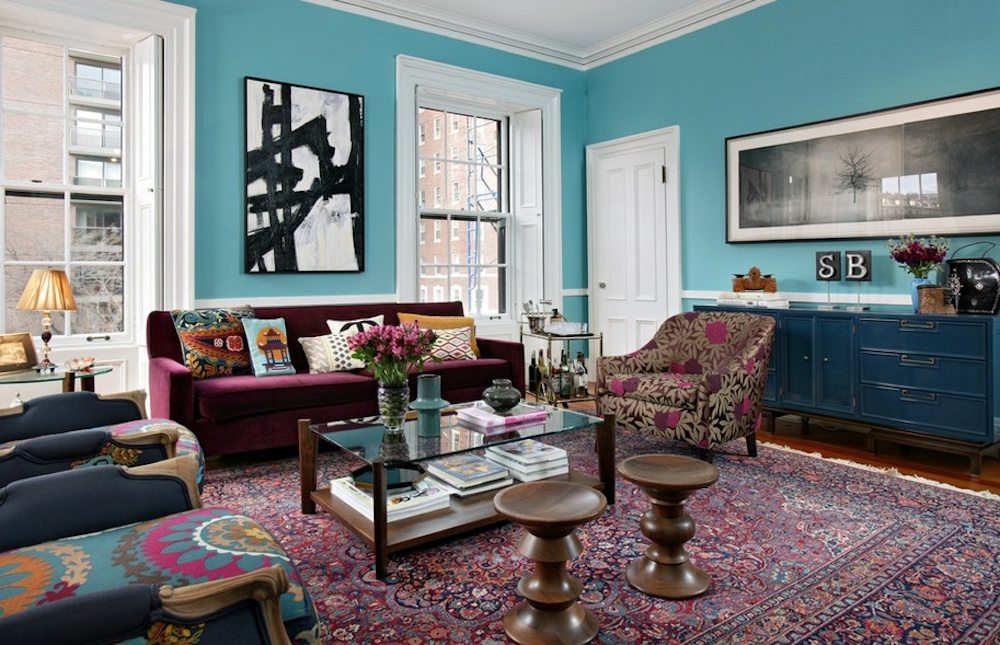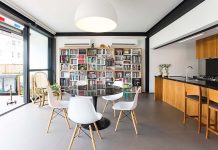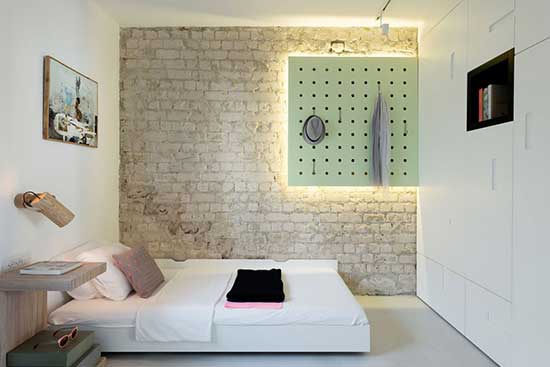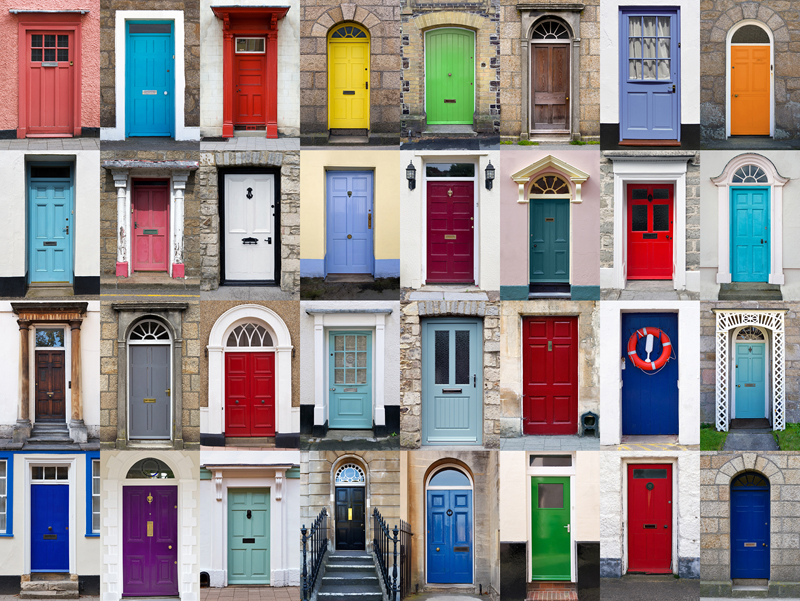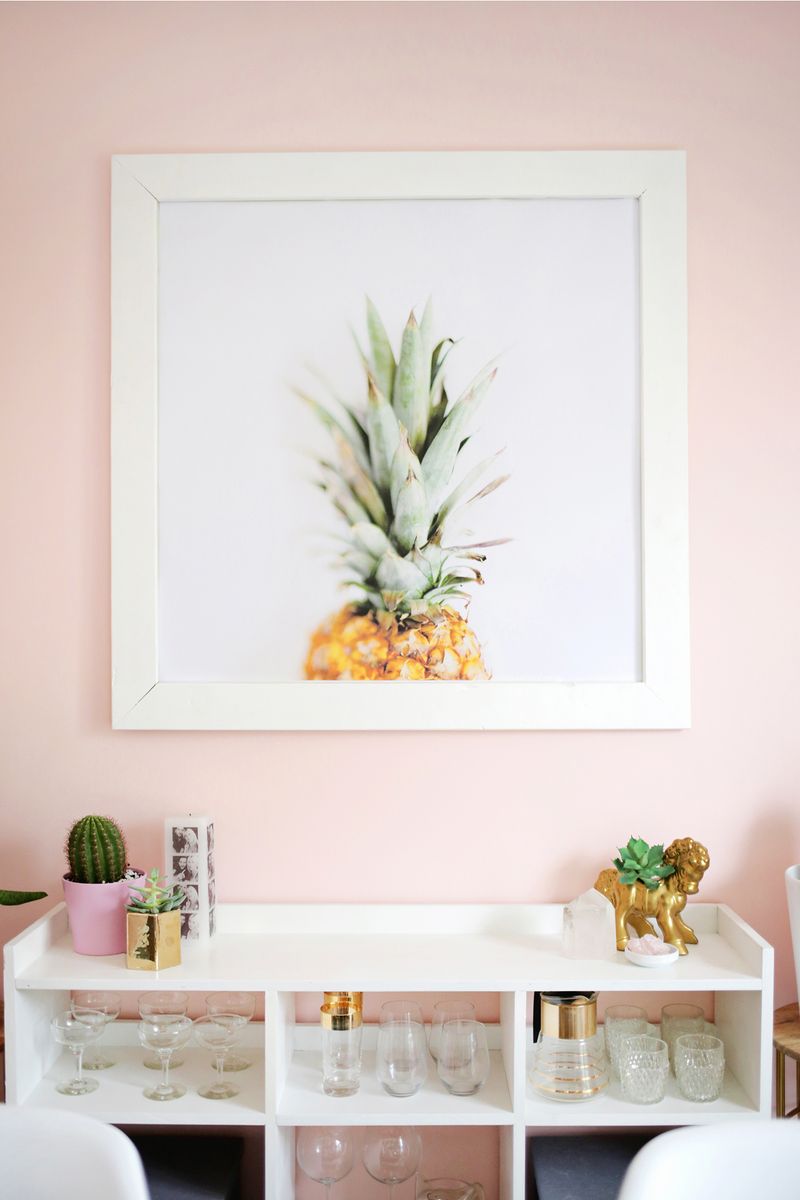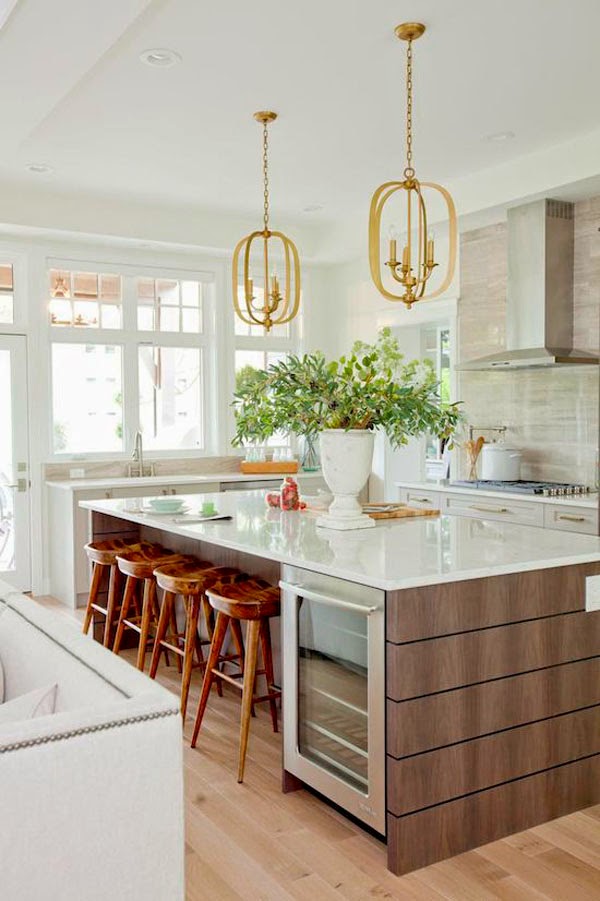
Color choice defines a room. Image Via: Kati Curtis Design
Most of us aren’t interior designers by trade and that’s okay. Whether you think of interior design as an enjoyable hobby or a necessary evil that helps keep your home looking presentable, sometimes it can be tough to understand the industry lingo. After all, how often do you hear about Tertiary Colors, anyway?
At Freshome, we aim for our content to be accessible to everyone – no college degree required. So, today, we’re going back to basics. Gear up for a little Design 101. In this post, we’ll tackle color theory basics that every design enthusiast should know.
After you’ve read, make sure to store this link somewhere readily accessible. It’ll come in handy next time you’re not quite sure whether you’ve chosen the right paint color.

Understanding color theory will make your design projects much easier. Image Via: Caitlin Wilson
1. How To Use The Color Wheel
Like trigonometry, the color wheel is probably one of those things that you learned about as a young child and haven’t thought of since. However, to really understand color, you may have to dust off some of that knowledge.
Simply put, the color wheel provides a visual representation of which colors blend nicely together. It removes all the guesswork, essentially. Most models are comprised of However, in theory, the color wheel could be expanded to include an infinite number of shades.
Don’t worry if you haven’t memorized the color wheel just yet. There are tons of ways to access it digitally. Paletton is a website that will let you create your own color scheme from the comfort of your computer screen and ColorSchemer offers the same capabilities in an app that’s available for iphone.

The color wheel is paramount when understanding color theory. Image Via: University of Makeup
2. What Are The Basic Colors
We bet some of you read the last paragraph and went, “12? How are there 12 colors in the color wheel? There are only 7 colors in the rainbow. “ True. But, trust us, there are, in fact, at least 12 shades on every color wheel. Here’s how things break down:
- Primary Colors: Red, blue, and yellow. Cannot be made from mixing other colors.
- Secondary Colors: Orange, Purple, and Green. Can be made by mixing the primary colors together.
- Tertiary Colors: The six shades that can be made from mixing primary and secondary colors.
If you’re unsure of where to start when it comes to decorating a colorful interior, one of these 12 is often a good jumping off point. Pick one and it will help you narrow down your selections until you settle on the exact shade that you love.

Primary and secondary colors instantly brighten any space. Tammara Stroud Design
3. Changing Colors With Neutrals:
Once you’ve selected a basic color, it’s easy to create many different versions within the same family. All you need to do is combine that color with a neutral in order to make it lighter or darker. In interior design parlance, this is known as tint, shade, and tone.
- Tint: The act of lighting a color by adding white to it.
- Shade: The act of darkening a color by adding black.
- Tone: Slightly darkening a color by adding gray.
Many artists recommend experimenting with color by mixing paints until you have a feel for how drastically neutrals will affect a color. However, if you don’t have access to art supplies, you can easily see an example of tinting and shading by going to your home improvement store and picking up a few of those sample color palettes.

Create tints and shades by adding neutrals to your base color. Image Via: Hughes Design Associates
4. Understanding Color Temperature
You may have heard colors described as having a temperature. A dining room may be decked out in warm tones while your friend may have chosen a cool color to finish off her bedroom. These temperatures also describe where the color falls on the color wheel.
Reds, oranges, and yellows are often described as warm colors. They are typically more vibrant and seem to bring a sense of liveliness and intimacy to a space. In contrast, blues purples, and most greens are the cool colors. They can be used to calm down a room and bring a relaxed feel.
When choosing color temperature for a space, you should also consider the size. Using a warm color in a tight room could make things feel a little claustrophobic. However, using cool colors in a spacious room could leave things feeling stark.

Use warm colors to encourage lively conversation. Image Via: Axis Mundi
5. Complementary Color Scheme
When it comes to color schemes, complimentary is the simplest. It uses two colors that sit opposite each other on the color wheel. Typically one color acts as the dominant shade and the other as an accent. This means combinations like red and green, blue and orange, or yellow and purple.
This color combo is extremely high contrast, which means that it’s best used in small doses and when you want to draw attention to a particular design element. You could use it to make your powder room pop or to bring extra vibrancy to your home office.
If you choose a complimentary color scheme, you really need to embrace neutrals. They will provide a place for your eye to rest and keep you from becoming overwhelmed in the room.

Use neutrals to balance out the high contrast of a complimentary scheme. Image Via: Katie Rosenfeld Design
6. Split-Complementary Color Scheme
If you like the idea of a complimentary color scheme, but are afraid it may be a little too bold for your tastes, split complimentary is a safer choice. To make this color scheme, you would first choose your base shade. Then, instead of choosing the color directly opposite of your base, you chose the two shades on either side of the opposite color.
Those two shades will provide a much needed sense of balance to the room. You’ll still get the visual impact of bold color, but you’ll be able to incorporate more of it instead of relying heavily on neutrals to calm the space.
Split-complimentary works best when you use your base color as the dominant. However, instead of choosing a saturated shade, try to focus o
n a color that is more muted. Then, go bold with your other two shades in the room’s accent pieces.

Split-Complimentary color schemes are often calmer versions of their complimentary counterparts. Image Via: McCroskey Interiors
7. Analogous Color Scheme
The analogous color scheme refers to using three colors in a row on the color wheel. Typically, two colors will be either primary colors with the third shade being a mix of the two and a secondary color. For example, you could choose red, orange, and yellow or red, purple, and blue.
The key to using this color scheme successfully is proportion. Again, the 60-30-10 Rule comes into play. You’ll want to choose one color to be the dominant shade, one to support the dominant, and the third, most vibrant color as an accent.
Interestingly, you can also create a similar color scheme using neutrals. It’s typically referred to as a monochromatic color scheme. Simply choose black, white, and gray in lieu of brighter shades.

Stay in one section of the color wheel to create a relaxing look. Image Via: Morosco Construction
8. Triadic Color Scheme
Triadic color schemes, sometimes also referred to as a triad, refers to using three colors with equal space between them on the color wheel. The three primary colors (red, blue, and yellow) are a perfect example, as are the three secondary colors.
This type of color arrangement is often extremely bold. Since the colors are in such high contrast and pure hues are often used, you’ll most often see this scheme in children’s bedrooms or playroom areas.
When using colors that are this lively, it’s always important to consider the spaces that are nearby. You wouldn’t want to put two different triadic color schemes next to each other. That would be too busy. Instead, make sure that the rooms next to your triadic space are calmer and mostly neutral.

The boldness of a triadic scheme makes it the perfect choice for a kid’s room. Image Via: Wen-Di Interiors
9. Tetradic Color Scheme
After the triadic scheme, things get a little more complicated. We’re moving on to balancing four colors in the space. The tetradic scheme, also sometimes referred to as a rectangle scheme because of the shape it makes on the color wheel, focuses on using two distinct pairs of complimentary colors.
In this scheme, color temperature plays a very important role. Try to make sure that you choose two warm colors and two cool colors to fill the space rather than an odd number. Using an even amount of both will help bring balance to the space.
It’s also important to vary how we view the colors. Look for patterns that fall within your color scheme and don’t hesitate to mix them among your solid pieces. If you use all solids, the room will seem overly saturated, but too many patterns will clash, so focus on choosing one or two to help break up the space.

Balancing warm and cool colors is essential in a rectangular color scheme. Image Via: John David Edison Interior Design
10. Square color scheme
The square color scheme is very similar to rectangular in both number and name. It uses four shades, but instead of focusing on opposing pairs, the colors are evenly spaced throughout the color wheel.
No matter which colors you choose, this scheme will be comprised of one primary, one secondary and two tertiary colors. Vary the intensity of the four colors by making two shades more neutral and two a little bolder.
Again, similarly to the tetradic scheme, you’ll want to pay attention to achieving an equal number of warm and cool colors. But, rather than giving equal attention to both color pairs, you should pick one shade to dominate the space and use the other three as accents.

Mix patterns and solids to add visual interest. Image Via: Rachel Reider Interiors
Sometimes interior design lingo can seem like its own language. No one could blame you if talking about furniture, layouts, and décor, makes your head spin. There are so many terms! In an effort to make design accessible to everyone, we’ve revisited some color theory basics. Use this as a guide before starting your next project and you’ll be able to navigate it like a pro.
Did we miss any key color theory topics? Are there any other design fundamentals that you’d like us to explore? Let us know in the comments.
- Recommended For You
-
 Way Basics Recycled Furniture – Super easy to assemble and rich in creative possibilities
Way Basics Recycled Furniture – Super easy to assemble and rich in creative possibilities -
 Cheap Color Changing Faucet
Cheap Color Changing Faucet -
 LIT Color-changing LED Tubes to Hide Under Furniture
LIT Color-changing LED Tubes to Hide Under Furniture -
 Decorating White Spaces by Adding a Delicate Touch of Color
Decorating White Spaces by Adding a Delicate Touch of Color -
 Rainbow Bookshelf
Rainbow Bookshelf -
 DIY : How To Paint Your House
DIY : How To Paint Your House
Want more stuff like this?
We’re on a mission to spread inspiring content far and wide.
Try our daily email and see for yourself!
By Tara Mastroeni in Best Of
- Tags:
- color theory
- design fundimentals
- interior design
0 comments
10 Color Theory Basics Everyone Should Know
10 Things Every Buyer Should Know About Home Inspections
10 Questions To Ask Yourself Before Starting In The Home Buying Process
10 Things You Should Know About Becoming An Interior Designer
The 10 Most Common Causes of Roof Leaks
Why Our Brains Love Symmetry in Design
Minimalist Staircase Design Enriching Century-Old House in Milan
How Architects Take Advantage of The Golden Ratio
10 Things You Should Know Before Painting A Room
Expressive Brazilian Architecture to Inspire Your Next Home Makeover
Shabby Hunting Cabin Turned Into Impressive L-Shaped Contemporary Residence
40 Small Bedrooms Ideas To Make Your Home Look Bigger
30 Small and Functional Bathroom Design Ideas For Cozy Homes
10 Best Free Online Virtual Room Programs and Tools
10 Things You Should Know Before Painting A Room
How To Make Your Home Look Like You Hired An Interior Designer
40 Small Bedrooms Ideas To Make Your Home Look Bigger
30 Small and Functional Bathroom Design Ideas For Cozy Homes
10 Best Free Online Virtual Room Programs and Tools
30 Best Small Apartment Designs Ideas Ever Presented on Freshome
10 Mistakes That (Almost) Everyone Makes in Interior Design
Freshome.com – Interior Design & Architecture Magazine

